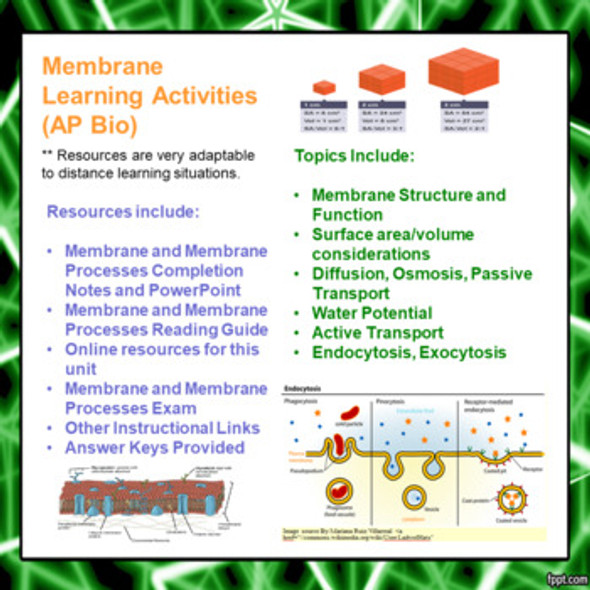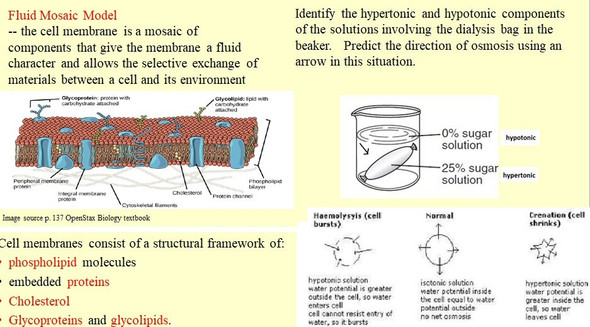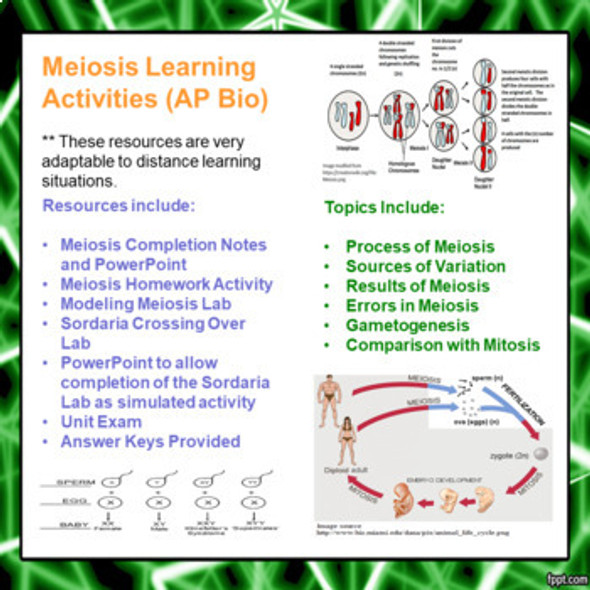Nervous System Learning Activities for AP Biology (Distance Learning)
- Bulk Pricing:
- Buy in bulk and save
Description
This package of learning materials addresses topics taught in AP Biology or other upper level biology classes. Some of the topics addressed include structure of the neuron, types of functional neurons, inhibitory and excitatorty synapses, synaptic transmission, the action potential, an overview of brain structure and evolution, as well as other nervous structure and function topics. Specific objectives addressed in the activity are listed below, along with the AP Biology ETS, NGSS and Common Core standards. The file contains 57 pages of student learning materials and one 45 slide PowerPoint.
The 17 page activity (15 pages of student handouts) requires the online use of the acclaimed animation at the University of Utah Learn Genetics website called Mouse Party. This is a computer simulation lab activity which can be used to investigate the influence of seven different drugs between neurons. Upper level Biology concepts such as inhibitory and excitory neurotransmitters, the reward pathway and competitive inhibition are amongst the concepts included in this activity.
Specific NGSS and Common Core Learning objectives addressed in this activity are listed at the end of this description as well as on the last two pages of the lab activity. This activity is designed for upper level Biology or psychology students. It may be suitable for lower level Biology students if they are given a good deal of teacher guidance and have been taught some basic information on neuron structure and function. Specific teaching about the nervous system is not required in the 2019-2020 revised AP Biology curriculum.
The answer keys to all activities and the nervous test are included. All lab handouts and the answer keys are available as both pdf and word documents. These learning materials are well suited for a distance learning situation.
The specific contents of the learning package includes the following items (the page count for these items are actual student handouts as answer key page counts are not included):
-- Learning Goals, NGSS Correlations, ETS AP Biology and Common Core Learning standards correlations (3 pages)
-- Nervous Completion Notes (14 pages)
-- PowerPoint to accompany the Nervous Completion Notes (45 slides)
-- Nervous Reading Worksheet (correlated to the free Openstax Biology text -- but can be used with other information sources) (6 pages/29 short answer questions)
--Endocrine and Nervous Case Study Scenarios Activity (11 pages)
-- Mouse Party simulation lab activity (17 pages)
-- Nervous Exam (6 pages/40 questions)
Nervous System Learning Goals
Upon the completion of this unit, the student will be able to:
1. list and describe the major parts of a neuron, and explain the function of each.
2. explain how neurons can be classified by function.
3. define reflex and describe the pathway of a simple spinal reflex.
4. discuss the process of synaptic transmission.
5. explain what a resting potential is and why it has a negative voltage.
6. describe the characteristics of an action potential, and explain the role membrane permeability changes and ion gates play in the generation of an action potential.
7. describe the role of cholinesterase, and explain what would happen if acetylcholine was not destroyed.
8. list some other possible neurotransmitters.
9. describe some mechanisms by which a neurotransmitter affects the postsynaptic cell.
10. state the functions of the major regions of the hindbrain; medulla, pons and cerebellum.
11. discuss the function of the reticular formation of the midbrain
12. discuss the function of the major regions of the forebrain; cerebrum, thalamus and hypothalamus.
13. discuss the location and role of the limbic system.
14. explain the difference between the central and peripheral nervous system.
15. distinguish between the functions of the autonomic nervous system and the somatic nervous system.
16. describe some major trends in the evolution of the vertebrate brain (cephalization).
NGSS Standard
HS-LS1-2. Develop and use a model to illustrate the hierarchical organization of interacting systems that provide specific functions within multicellular organisms.
Common Core State Standards Connections:
ELA/Literacy
RST.11-12.1 Cite specific textual evidence to support analysis of science and technical texts, attending to important distinctions the author makes and to any gaps or inconsistencies in the account.
WHST.9-12.2 Write informative/explanatory texts, including the narration of historical events, scientific procedures/ experiments, or technical processes.
WHST.11-12.8 Gather relevant information from multiple authoritative print and digital sources, using advanced searches effectively; assess the strengths and limitations of each source in terms of the specific task, purpose, and audience; integrate information into the text selectively to maintain the flow of ideas, avoiding plagiarism and overreliance on any one source and following a standard format for citation.
WHST.9-12.9 Draw evidence from informational texts to support analysis, reflection, and research.
SL.11-12.5 Make strategic use of digital media (e.g., textual, graphical, audio, visual, and interactive elements) in presentations to enhance understanding of findings, reasoning, and evidence and to add interest.
Mathematics
MP.4 Model with mathematics
Terms of Use
Purchase of the product is for classroom use by the purchaser only. It is a violation for individuals, schools, and districts to redistribute, sell, or post this item on the Internet.
This work is licensed under a Creative Commons Attribution-NonCommercial-ShareAlike 4.0 International License.
This learning package bundle is part of the AP Biology Complete Course. The complete course contains 22 learning package bundles in addition to this one. Save nearly 60% over the cost of buying 23 individual unit learning bundles with your purchase of the complete course.
Check out Monday's Rescue for more great resources!














